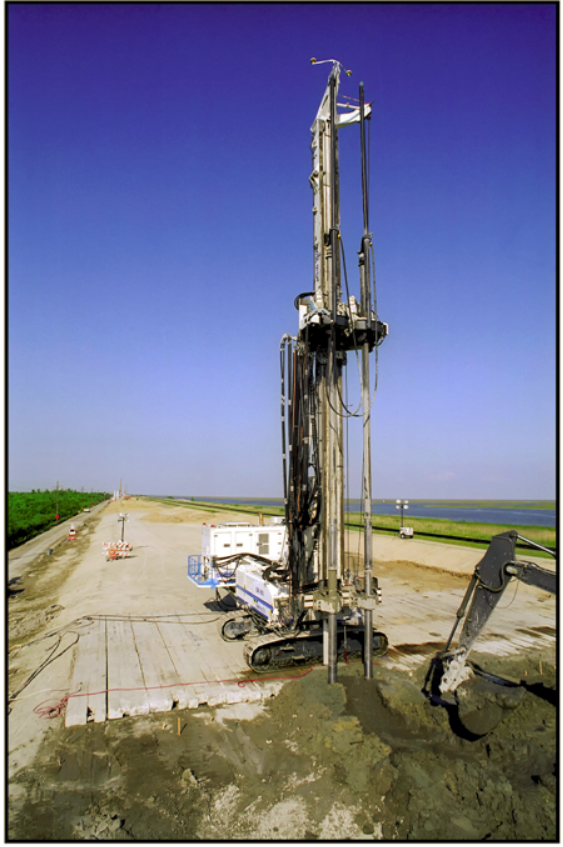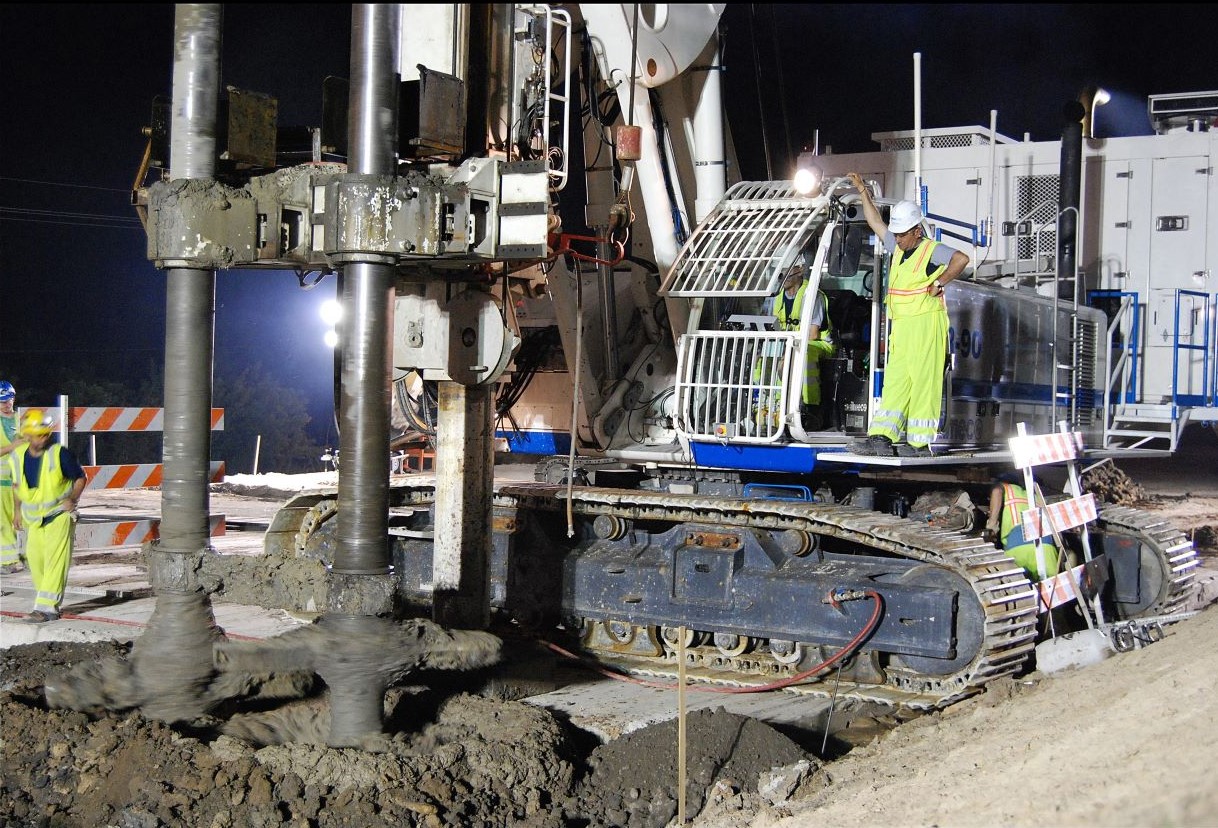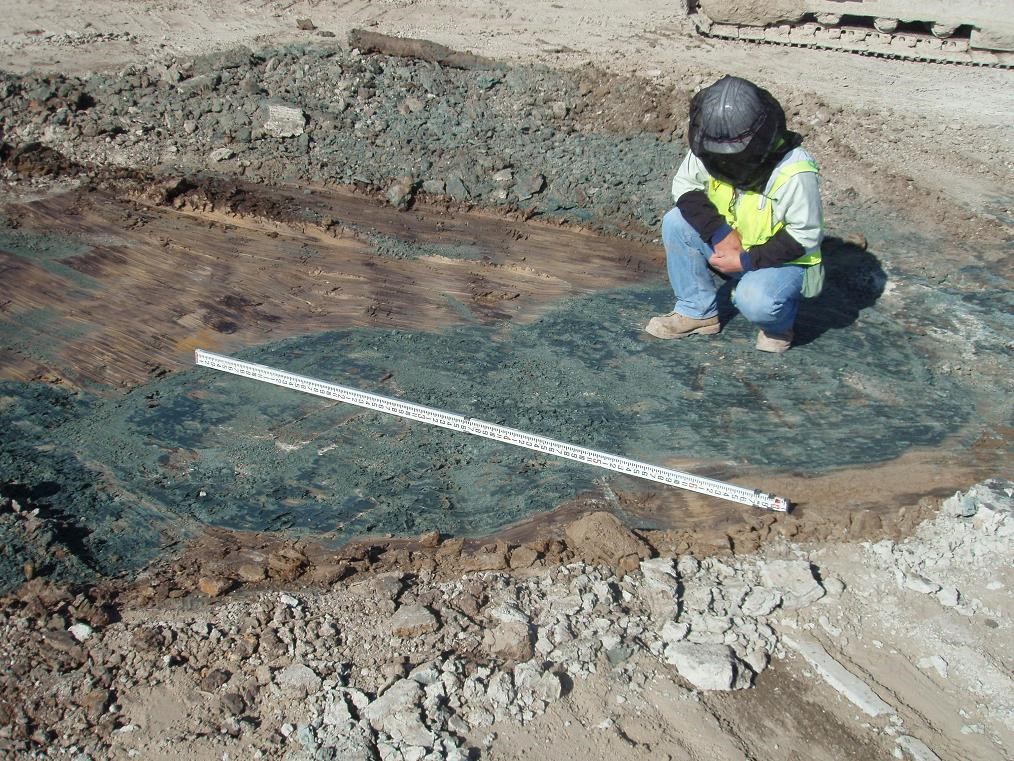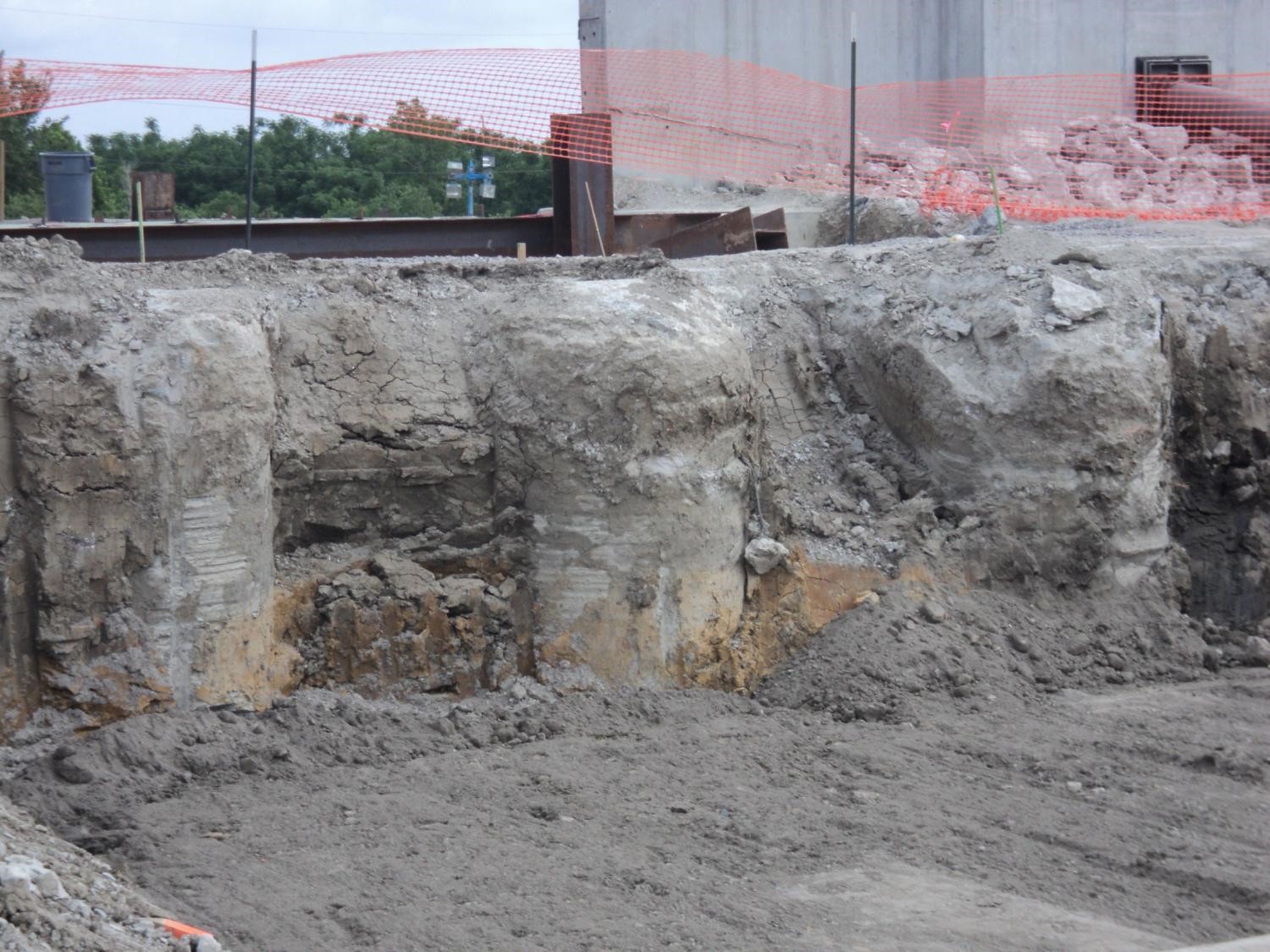




<p><p><figure id='attachment_2643' style='max-width:563px' class='caption aligncenter'><img class="wp-image-2643 size-full" src="https://www.geoinstitute.org/sites/default/files/geotech-tools-uploads/…; alt="Photograph of deep mixing equipment used in construction of Levee LPV 111." width="563" height="847" /><figcaption class='caption-text'> Deep Mixing Methods Photograph courtesy of Trevis Icos Corporation</figcaption></figure></p><p>A variety of in situ mixing tools can be used to blend soils with cement, lime, slag, or other binders in powder or slurry to stabilize the in-situ soils, and increase their strength and decrease compressibility. Binders can be in the form of powder or slurry, classified as dry and wet method, respectively. Advantages include low disturbance to surroundings, wide application of soils, ease of installation, and relative low cost. This technique is applicable to new embankments and embankment widening over unstable soils.</p><p>
